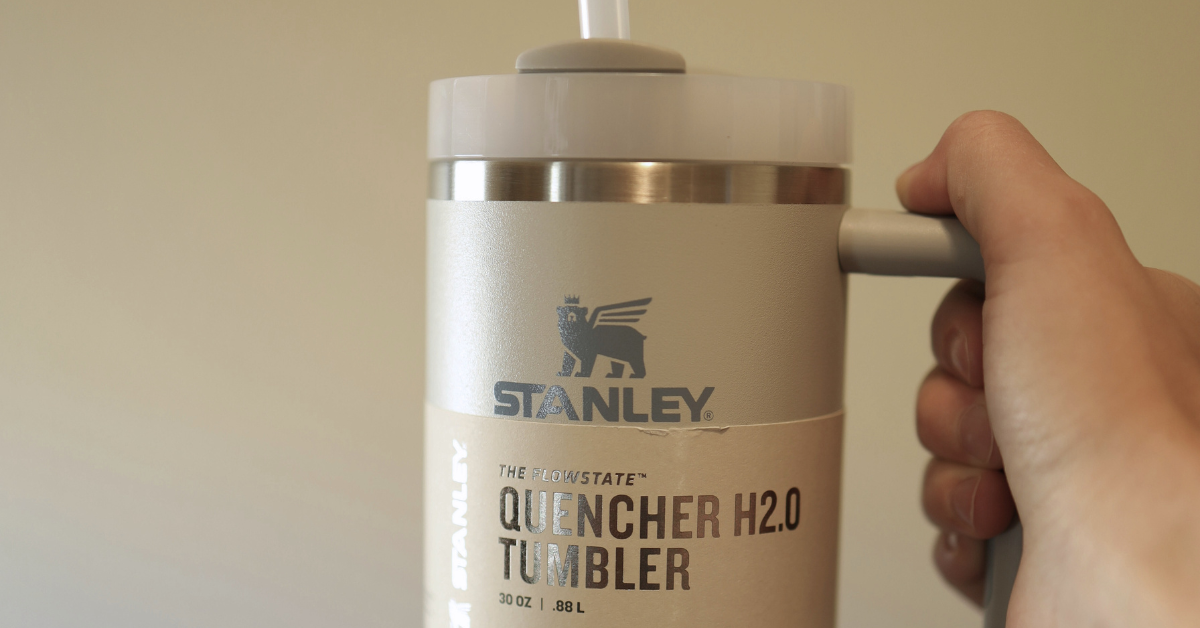What the Stanley Cup Craze Teaches Us About Consumerism
Over the last few years, you’ve likely noticed those giant metal water bottles every single girl seems to be lugging around and sipping from. And if you haven’t, you’ve probably seen various memes and TikToks making fun of this unexpected trend: the beloved Stanley cup.
Much like how Carhartt somehow bridged the gap between rugged, outdoorsy folks and your average girl waiting in line at Starbucks, you’ll now find Stanley in that tiny sliver of the same Venn diagram.
Sales of the Stanley cup — or the Quencher, more specifically — rose 275% from 2020 to 2021. While the company has made tried-and-true vessels since 1915, they saw the largest spike in sales over the last couple of years: going from a revenue of $73 million in 2019 to a remarkable $750 million in 2023.
Many credit the most recent surge in sales to a viral TikTok video of a woman showing her Stanley that survived a car fire — and even still had ice in it. But its popularity had peaked long before this impressive testimonial posted in November 2023, and this is largely because of influencers and commoners alike including it in their online persona, as an accessory to everything they do during the day.
Don’t get me wrong — I have nothing against the Stanley cup whatsoever. It’s an exceptional product that holds a decent amount of water, keeps it cold, and fits in the cup holder — and apparently, it’s fireproof. In fact, I own a knock-off version of the covetable Quencher. So obviously I, too, was influenced by the masses to sport an identical silhouette, whether it cost me $25 or $45.
So I have to ask myself “what is it exactly about this cup that has people so enraptured?” And what makes them do crazy things like resell them for hundreds of dollars on eBay, steal 65 cups valued at nearly $2,500, or storm Target for limited edition Valentine’s Day cups like it’s Black Friday at BestBuy in 2003?
And on a more realistic level than these newsworthy stories, why do we wish to collect much more of them than we actually need? If our original intention was to stop using plastic water bottles and cut down on waste, doesn’t that negate that idea if we have 10 color options to choose from? So by stocking our shelves with a collection of Stanleys representing every color of the rainbow — including that prized Valentine’s Day hue — we’re canceling out the reason we went down this path to begin with. Even the products designed to decrease consumerism are not safe from our consumerist claws.
The Stanley cup persona might also play into the image we wish to project to the world: of being healthy and hydrated or eco-friendly and resourceful. And the funny thing is, we might actually be all of those things! But there are also several other ways to stay hydrated or cut down on plastic use — and bonus: they don’t cost nearly $50…or hundreds, if you’re an avid collector. But unlike a Nalgene, Yeti or HydroFlask (which aren’t necessarily inexpensive either!), the Stanley cup fits right into that “clean girl aesthetic,” which is apparently on the decline.
In fact, word on the street is that Stanley cups — and this whole obsession around them — are on the decline as well. According to trend researcher Casey Lewis, the Stanley cup is “over” now that millennial moms and young teenagers have adopted the trend. (Side note: As someone who is about to become a millennial mom, I am offended!)
This just shows you how quickly these fads can come and go — and to think of all these brand new Stanley cups that will now be pushed aside, as the newest water vessel takes its place, thus repeating the cycle. If you try to keep up with it all, you better buckle in (and update that budget) for the rollercoaster ride of a lifetime. (Don’t even get me started about the ever-rotating interior design trends, which are a much costlier rollercoaster ride to be on!)
The Internet dictates our buying habits in really sneaky, scary ways. Without us realizing it, we begin seeing accessories pop up in the background of Instagram pictures and TikTok videos, almost like a subliminal message. And pretty soon, we’ve formed an idea of what’s “cool” whether we are conscious of the elements that make up that image or not.
And I’m certainly not immune to this whatsoever! I’m just trying my best to spot these patterns and pull myself out of that hypnotic draw towards specific products, interior design trends or clothing styles. And I hope I’ve helped you have the same filter on while you’re scrolling!

